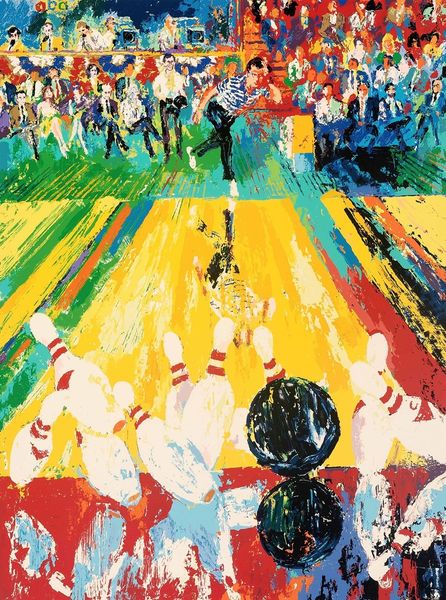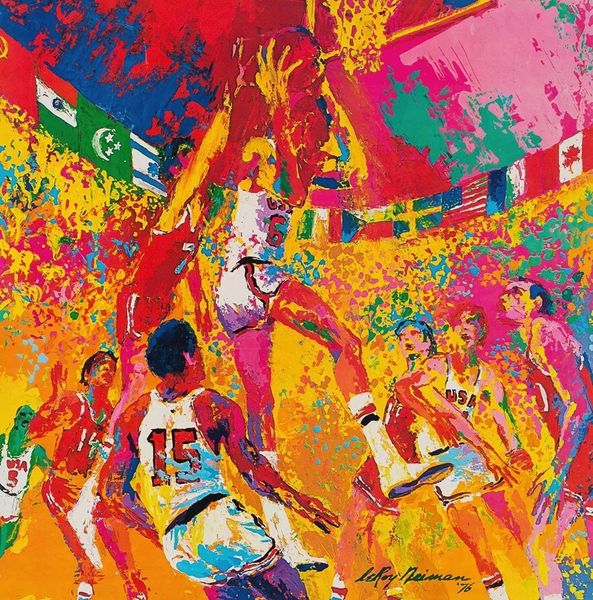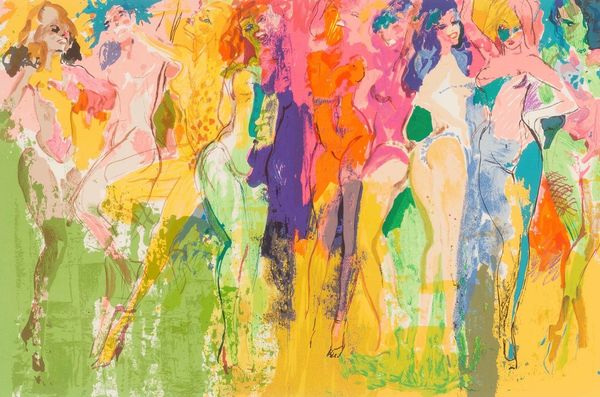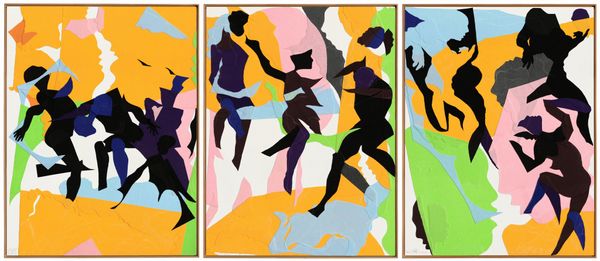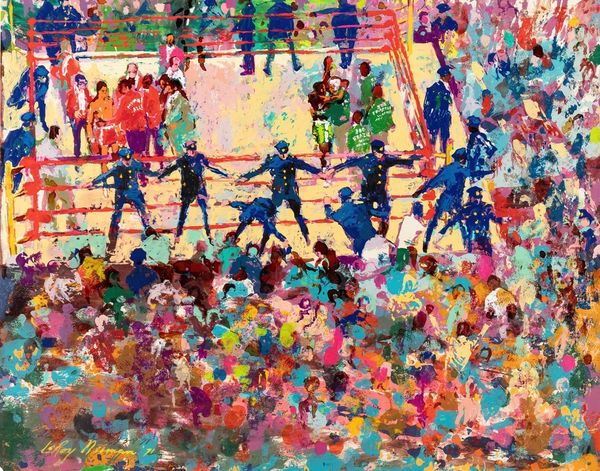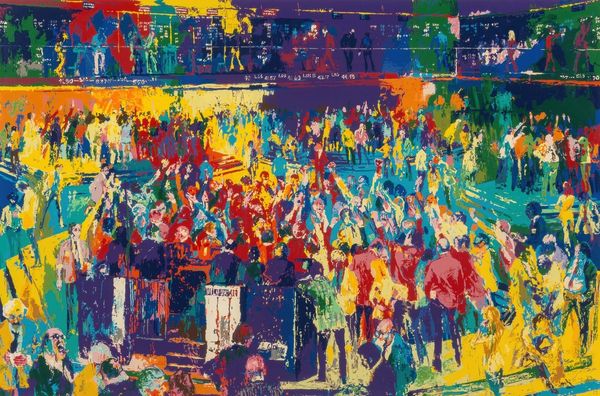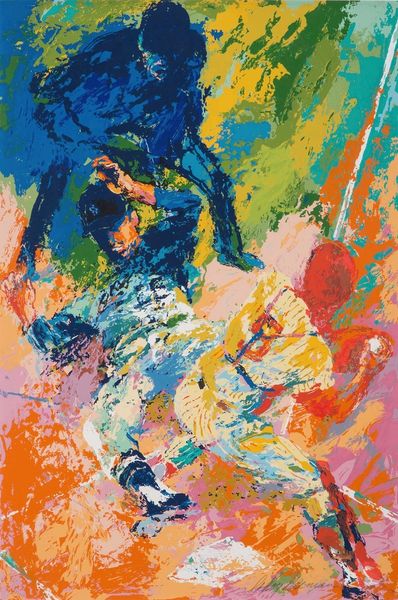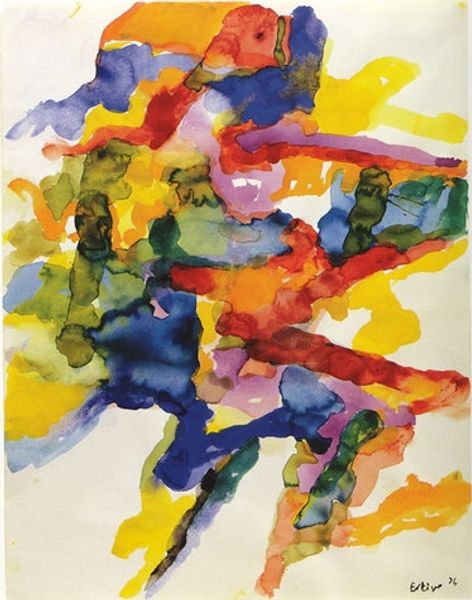
Copyright: Modern Artists: Artvee
Editor: LeRoy Neiman’s "Man at His Leisure; Super Bowl #3, Playboy illustration" from 1973, created with watercolor… it feels so vibrant, almost chaotic! So many bodies, the implied movement. What do you see in this piece? Curator: I see a reflection of the hyper-masculine culture that Playboy promoted. Neiman, working for Playboy, depicts this sporting event – the Super Bowl – as a spectacle of male pleasure. The watercolor, usually associated with lightness and transparency, here is used to convey a sense of frenzy. Editor: Frenzy… definitely. All of those excited, blurred figures, and pops of color that almost vibrate. Is he critiquing or celebrating this “leisure?” Curator: That’s the crucial question. Is Neiman celebrating or documenting? Consider that this was created during the rise of second-wave feminism. The male gaze is on full display, isn't it? But look at the anonymity – everyone's faces are obscured by sunglasses or shadows. Does that suggest a critique of the loss of individuality within such a scene? Editor: That’s a good point, it's like everyone is performing a role, consuming a spectacle. Curator: Exactly. Think about who is *not* represented: women in positions of power or authority, for example. The Super Bowl crowd becomes a stand-in for broader societal power dynamics at the time. Editor: It really complicates how you look at "leisure," doesn't it? It becomes less about relaxation, more about reinforcing hierarchies. Curator: Precisely. By understanding its historical context, Neiman's watercolor becomes a powerful commentary on gender, class, and the spectacle of American culture. I think I'll revisit it knowing more about feminist theory and cultural power structures. What are your final thoughts? Editor: Definitely a different viewing experience! It makes you wonder who actually benefits from this kind of "leisure."
Comments
No comments
Be the first to comment and join the conversation on the ultimate creative platform.
